| Umělec magazine 1999/4 >> Hybrid Goods | List of all editions. | ||||||||||||
|
|||||||||||||
Hybrid GoodsUmělec magazine 1999/401.04.1999 Jiří Černický | tradition | en cs |
|||||||||||||
|
Ruthless humiliation and killing in Africa and Amaricas have lasted for an unbelievable period of 300 years. All European powers have taken part in it and, of course, benefited from these atrocities as they controlled all advanced technologies. It is impossible to express horror experienced by millions of slaves, forcefully detached from their families and thrown to the bottom of human dignity. Responsibility will never be sufficiently proved as the culprits have maintained their power. That what is left remaining is the feeling of hybridity of saturated pain.
(An interesting note: it is ironical that one of the first promoters of “the import of Africans to America“ included a great humanist and protector of Indians, father Bartholomew de las Casas who wanted to protect the vulnerable Indians by importing “Blacks“.) The most terrible trade in the history of mankind resulted in a clash of three civilizations - European, American and African. This forced mutation gave way to “hybrid culture“ which is especially interesting for its visualization. The top of its art expression includes that which is to exponentiate a live, religious experience - “afroamerican altar“. Africans and Indians were in most cases forced to accept Christianity. Since they had their own strong religious traditions which they did not intend to give up, they had to go underground and carry out their ceremonies in secret. Their rituals often served as a sort of protest against Catholic Church and white invaders, such as practices of African voodoo priests in Haiti. In 1791, voodoo priest Boukman carried out a ceremony during which the participants called up a storm through their trance dance. There was, however, one other way to realize one’s religious imagination: seemingly accept the form of a Christian alter but in fact impose another subtext to it - to use Christianity as a camouflage. Thus it often happened that an African slave prayed Lord’s prayer to Obatal, the Yoruba God of Cleanliness, in the form of body of Jesus painted black, or to Virgin Mary, in whose blue robe he invoked Yemaya, the Goddess of the Seas. Altars that were created in a completely free and liberated mutation of various forms represent the most original pieces. As a product of individual creativity, they are often incomprehensible and bizarre to a European. In addition, such alters may serve completely different means than a Christian altar. One of the reasons include specific ritual and practices without which the altar is almost dead. A very euphoric ceremony and ecstatic prayers, trance dances, rhythmical music, preparation and consuming various meals are part of an altar’s visual form, often concealed in a cloud of dust and smoke coming from the fire. The overall esthetic form of the altar is very important with special attention paid to the materials it is made of. Effect and attractiveness are also important factors. Hence the use of broken pieces of mirrors, shiny and colorful surfaces - flowers, ribbons, beads, pearls, shells, feathers, skin of leopards, and, for some yet unclear reasons, mass produced objects. Authors of alters are drawing inspiration on their own religious tradition related iconographical symbols. This fact, however, does not prevent them from experimenting and one may even say artistic intents. Some of the authors of altars, indeed, consider themselves artists. Jose Bedia of Cuba is a representative of the Divine Medicine of Congo and he experimented with grouping various objects. Depending on changes in his private apartment, the alter was being adopted to specific conditions. He installed it in a laundry in Havana, in a toilet in New York and in pantry at other times. It included feathers which served to elevate souls in the air, mirrors and other shiny objects dispelling evil, while knives, needles and thorns (sometimes tied up with a chain) were there to protect the believer from illnesses and to repel envy. Glitter of the objects serves also one other purpose - to set the alter in spiritual vibration. His altars also feature “cosmograms“, magic geometric graphs used for the soul’s contact with time and space. They included symbols of travel of the soul which is represented by a miniature sun. Soul is most often portrayed in the shape of a diamond and placed on altars or masks. “Tree Altars“ represent another original type of altars and their purpose is to keep the spirit of ancestors alive for better lives of the living. Hung on them are often colorful plates resembling satellites. Their task is to attract bad spirits to their surfaces and capture them the way carnivorous plants imprison insects. The tree’s roots then take the spirits to the underworld so that they may communicate with the dead. The trees are sometimes equipped with plastic Coca-Cola bottles filled with red liquid resembling blood. Very elegant and monumental looking are “Scarf Altars“, reminding of thrones at the first sight with ship’s masts sticking out of them. They are usually installed at the top of mountains with their tilts attracting souls of the dead who died on the slave-dealers’ ships. “Gyp Packnett“ altars are quite peculiar and a bit morbid type of altars. They are most often placed on an outside wall, close to a door. They are formed by two dolls decorated with chains and a gun, encircled by a fence made of colorful canisters with candles inside them. The altar is to protect the owner of external danger. A special category of altars features those which include various medicines and drugs whose purpose is to take away illnesses from believers. The “Omolu“ altar protects people of the city of Salvador from AIDS. It is sacrificed to Obaluayie, the Yoruba God of Plague. This type of altar consists of two parts. The first one of them is formed by ceramic urns placed on the ground in front of the altar. They are dedicated to those who suffer from AIDS. If the urns are covered with blood stains, they symbolize pain, fever and illness. The containers are often brought to the altar by close relatives of the victims. It is common for women to place their urns to the left of the altar while men put theirs to the right. By carrying out this ceremony, they express their sympathy and moral encouragement to the ill. The altar’s second part consists of stairs on which plates are put, filled with special ingredients. Placed in the mixture are metal pieces in the shape of open sticks - a bird, symbolizing Osanyin, the God of Healing. This part of the altar also expresses hope for the future and gives the ill a chance to power up their will to continue to live their lives. South-American hybrid art has developed its own specific form. It has not lost any of its purity and originality (by which is not meant traditional purity and originality but the hybrid ones), lively and personal touch, free thinking of individuals. It is a question whether it is good or bad. Personally, I believe that it is good inasmuch as hybrid purity does not develop off of traditional purity which has already happening as VIOLENCE was used. Due to violence, Africa lost majority of its intellectual elite as slave-dealers, of course, chose the best slaves. For this reason Africa finds itself in its current situation: total exhaustion, dryness and naturally negative hybridity caused by extermination from the original way of life. The question is whether something similar is happening today. I often think of the connection of modern, communication media with violence. It is hard to realize to which extent we accept rapid media culture freely or to which extent we are victims of sophisticated rape. In any case, it is now possible to observe whether Europeans were successful with their modern technology and culture in America, whether the world is richer thanks to globalization or whether it looses. I think we may apply rule of proportion here: VIOLENCE-LOSS, FREEDOM-WEALTH.
01.04.1999
Recommended articles
|
|||||||||||||
|
04.02.2020 10:17
Letošní 50. ročník Art Basel přilákal celkem 93 000 návštěvníků a sběratelů z 80 zemí světa. 290 prémiových galerií představilo umělecká díla od počátku 20. století až po současnost. Hlavní sektor přehlídky, tradičně v prvním patře výstavního prostoru, představil 232 předních galerií z celého světa nabízející umění nejvyšší kvality. Veletrh ukázal vzestupný trend prodeje prostřednictvím galerií jak soukromým sbírkám, tak i institucím. Kromě hlavního veletrhu stály za návštěvu i ty přidružené: Volta, Liste a Photo Basel, k tomu doprovodné programy a výstavy v místních institucích, které kvalitou daleko přesahují hranice města tj. Kunsthalle Basel, Kunstmuseum, Tinguely muzeum nebo Fondation Beyeler.
|







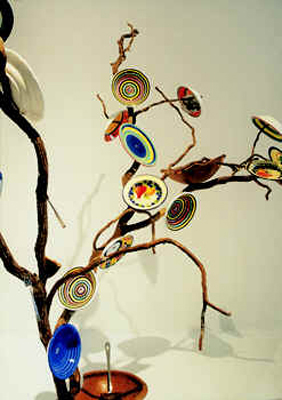
























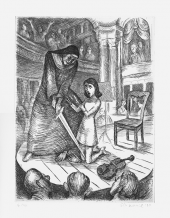
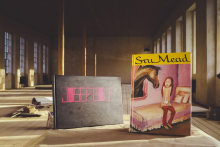
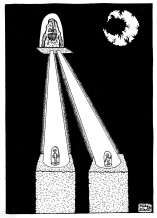
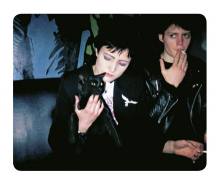


 We Are Rising National Gallery For You! Go to Kyjov by Krásná Lípa no.37.
We Are Rising National Gallery For You! Go to Kyjov by Krásná Lípa no.37.
Comments
There are currently no comments.Add new comment